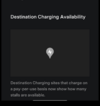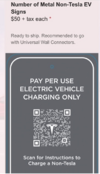Eric33432
Member
FYI, looking something else up I found out that each building is 4000 amps at 480/277 volts (I guess this means 3 phase)
Depending on how that math works it is 1 or 2 MW. 50 L2 chargers (usually 6kw) would be 300kw, so a pretty big add to a parking garage that has just some lighting and elevator. (lighting: ~1500 stalls with about 25w or 50w of LEDs, with sensor per stall is only 75kw
Most buildings in the US (and probably Canada) that have large power demands for things like air conditioning, elevators, etc., are provided 480/277. Even a typical Home Depot or Lowes would normally be provided 480/277. The air conditioning runs on 480 3 phase, and the lighting on 277. Then there are step down transformers for all the 208/120 volt loads.
BTW, 4000 amps at 480 volts 3 phase is 3,321,600 watts (4000 x 480 x 1.73).
I suppose in your case, the Tesla Wall Connectors in your building are connected to 208 volt power provided by a step down transformer.
It is interesting that Tessies can be charged from 277 volt power, but Tesla has dropped official support for this. If 277 volts was supported, it would be less expensive for large scale EVSE installations (assuming other EVs also support 277 volt AC charging), because there would be no need to install the large and expensive step down transformers. Also, the size of the wiring for the electrical service would be less than half the size.




